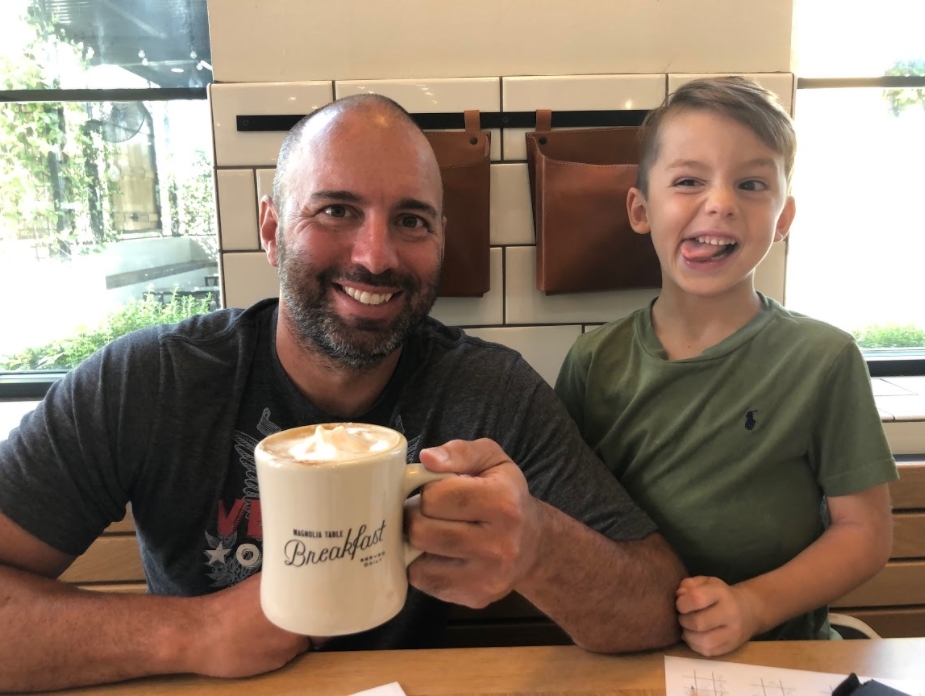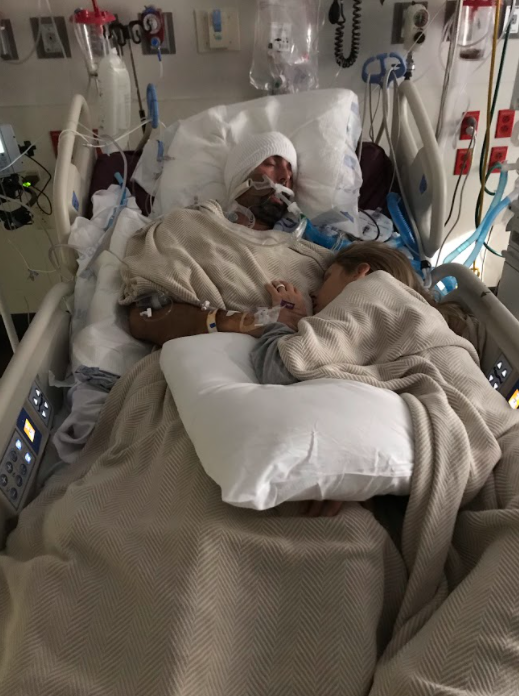The following is a guest article written by Mike L. Bushby, a BJJ purple belt at Next Edge Academy under Bruce Hoyer.
BJJ Community, one of our own is in need of help. On September 14th, Ted Kalloway, a blue belt out of Alvarez Brazilian Jiu-Jitsu in Arlington, TX suffered a catastrophic stroke and is currently fighting for his life. Kalloway, who is also a veteran of the United States Navy & Air Force Reserves, is in the hospital undergoing intensive rehabilitation to correct significant damage to his brain that affects his ability to move, speak, and swallow. His loved ones are in need of help to provide him the support he needs to fight his way back to them.

Here is a link to the family’s GoFundMe.
Kalloway’s case is the latest stroke experienced by a BJJ practitioner, but it is by no means the only one. Illinois-based brown belt Chris Martin and his partner, California-based black belt Josh Vera, have been collecting and compiling these cases for years in the hopes of spreading further awareness and helping practitioners stay safe. The first case on Martin’s list was his own, a 2017 stroke during a typical class that almost ended his life. For his part, Martin has already been in contact with Mr. Kalloway’s coach and described the interaction as “very open and productive.â€
The primary mechanism of risk when stroke affects BJJ players seems to be chokes — particularly, intense resistance to chokes. Many of us are guilty of this. We feel like we are almost out, and if we can “just hold on†we can reverse our fortunes and secure an escape or a better position. However, as the choke is held, and we strain against it, the soft and elastic tissues of the blood vessels can be strained, causing tiny stresses or tears in the vessel. The most serious example of these tears is called a vascular dissection. It is these tears, as well as the blood clots that form on them to heal the tissue AND residual scar tissue that forms during the healing process, that place us at higher risk for strokes and other neurovascular conditions. Such was sadly the case for Mr. Kalloway.

The effects of these injuries are not always immediate. In Mr. Kalloway’s story, he left practice and went about his business. He later sought treatment for mild symptoms, but was dismissed without the severity of his condition being realized. Later, he went to a movie theater and while there, he collapsed. A combination of an empty theater and a sudden onset stroke left this previously very healthy young man lying, undiscovered, on the floor for several hours, which further complicated his case and reduced his candidacy for the most effective stroke treatments. “This seems to happen too much in our sport, gals and guys getting sent home without getting the proper treatment. This is why Josh and I traveled last year at this time to speak about this topic at The AZBJJF annual coaches meeting hosted by Gustavo Dantas.†said Martin.Â
Because we can’t hear Ted Kalloway’s account detailing his “mild†symptoms, we will focus for a moment of Chris Martin’s first-hand account, on which he reflected following his recovery:
“After the accident, my daughter Izzy reminded me of a conversation she and I had days before the accident. I had described discomfort under my jaw. I felt sick, like I had Strep throat, but the discomfort was only on the left side of my mouth. I felt a pressure in my neck and couldn’t tell if it was a sore muscle or a slight illness like allergies. I described it to my daughter Izzy as a ‘weird feeling.'”
Martin’s campaign to raise awareness has compiled a list of over 100 BJJ athletes who have experienced strokes and/or arterial dissections, a condition in which the inner lining of the blood vessel which provides structure and stability is damaged. The subject of stroke in jiu-jitsu has been discussed as recently as last year on what has become the pinnacle of media platforms, The Joe Rogan Experience. Martin specifically calls Rogan out for his effusive descriptions of “choking the shit†out of his partners with the notion that they are “fine†afterwards. “He’s just wrong,” Martin insists. And he is proof.
Martin’s message has grown in magnitude, but the amount of resistance and even outright denial of this danger has been daunting, to say the least. In this age of science denial, misinformation, and “broscience,†we as a jiu-jitsu community have to be better. Within recent history, boxers have adapted to the growing awareness of the impact of excessive sparring on their careers and later health. Football programs from the NFL to Pop Warner have altered tackling practices, changed rules, and spoken out to raise awareness of the impact of CTE on athletes. We can do the same, and for us, the answer is extremely simple: Tap out, and know the signs. We can’t be in denial about it any longer and when we are drilling, sparring, or competing, when the choke is locked in, tap out. If we reduce our risk of vascular microtrauma by not allowing our neck to be endlessly, aggressively squeezed, we can continue to train the sport that we love without worrying about its effect on our health.
That doesn’t mean that you can’t train hard; it doesn’t mean you can’t fight your way out of chokes. It simply means following what all the memes say: Check your ego, recognize when you have been caught, and of course, remembering that the best way to defend a submission is “Don’t get caught there.â€
References:






















